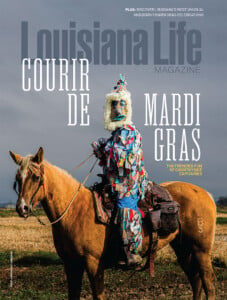Hotels with a Political Past

Huey Long didn’t mess around when he wanted to get to his favorite hotel. During his administration, much of the work was in progress for constructing U.S. Highway 61 which would connect Baton Rouge to New Orleans. The road would become commonly known as the Airline Highway because that was a term for a straight line between destinations, in contrast to the nearby Great River Road, which paralleled the many bends of the Mississippi river.
Long lobbied for Highway ‘61’s straight-line to connect the old state capitol, where he worked, with the Roosevelt Hotel in New Orleans, where he worked and played.
This edition of Louisiana Life looks at some the state’s trendy hotels but in this the 100th anniversary of the first time Long ran for governor (he lost in 1924 but came back strong four years later), here are some recollections about hotels with a political past. None have been as important as the Roosevelt, itself named after a politician: Teddy.
There are two other classic hotels that are part of Louisiana politics. One, the Heidelberg in Baton Rouge, was built in 1927, coincidently at the same time Long was making his second run (this time successful) for governor. Though Long lived in the governor’s mansion, he also had a fourth-floor suite at the hotel. Now known by the wordy name of Hilton Baton Rouge Capitol Center, the downtown hotel, which borders the river, was the place to stay. It had an elegance similar to the Roosevelt. Political guests throughout the years have included John Kennedy, Hubert Humphrey, Jimmy Carter and, a politician with a different vision of sharing the wealth, Fidel Castro.
New Orleans would also be the site of another politically connected hotel: the Monteleone, located on the edge of the French Quarter. Edwin Edwards had his election victory celebrations there and so did John Bel Edwards on the night of his first election in 2015. Reporter Tyler Bridges of The Times-Picayune would tell the story of the governor-elect and some of his buddies from his West Point days going to the roof top pool deck later that evening and smoking cigars. Below, were the twinkling lights of the state that John Bel was about to govern and the soft movement of the great river that ran through that state. He was only blocks away from the Roosevelt Hotel and ninety miles away from the Heidelberg.
In that setting atop the Monteleone, it must have been a great feeling to puff on a cigar. At that moment, John Bel Edwards was not just an everyman but a king.

Errol Laborde
Executive Editor
Errol@Louisianalife.com
Louisiana Insider
Catch up on the latest podcast episodes
Episode 166
Slithering in the Swamps – Captain Caviar John Burke’s Cajun Encounters
John Burke knows about swamps. He spends time living close to the Atchafalaya swamp near Patterson, Louisiana. Earlier in his career he was involved in a business of making caviar from the roe of the choupique, a native fish whose eggs have some of the similar properties properties usen in European caviar. Now he gives swamp tours. His company, Cajun Encounters, not only takes everyday tourist into the swamps, but media celebrities too, such as Troy Landry, the star of the “Swamp People” TV series.
Episode 165
Michael Hecht – Making the Region Stronger
Why are people from Louisiana leaving? Well, not all of them are, but there has been a subtle decline enough to make people wonder. “Jobs” is usually the answer, but there is some good news for the future, including in the energy- and tech-based industries. Michael Hecht, president and CEO of Greater New Orleans Inc. (a nonprofit agency dedicate to economic development), talks to Louisiana Life Executive Editor Errol Laborde about both the challenges and the successes of the Gulf South region.
